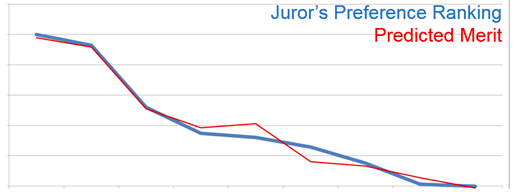
Qualité acoustique et vibratoire - développements ciblés
Services d'ingénierie pour définir des critères de qualité acoustique et vibratoire objectives correspondant aux préférences subjectives du consommateur final.
La sonorité est un élément essentiel de la perception de la qualité global d’un produit, par le consommateur final. Certains bruits émis par les produits sont inévitables, mais ils peuvent très souvent être modifiés pour être moins dérangeant, voir même devenir agréable - comme le rugissement d'un moteur par exemple. Cependant, la perception de la qualité sonore est subjective.
Pour réaliser une évaluation structurée, il est nécessaire de définir des paramètres objectifs de qualité sonore et vibratoire, correspondant aux préférences subjectives du consommateur final. Cela peut également aider à élaborer des critères plus représentatifs de réussite/échec pouvant être intégrés au processus de fabrication, éliminant, ainsi, les incertitudes liées aux spécifications subjectives de qualité sonore.
Nous avons travaillé en collaboration avec de nombreux clients sur des projets d’études par jury pour déterminer les préférences subjectives des consommateurs finaux et les corréler à des données objectives, ou dans le cadre de développement de métriques et objectifs de qualité sonore pour différents types de produits afin de les transformer en recommandations visant à améliorer les performances acoustiques.
Voici quelques projets sur lesquels nous avons travaillé avec nos clients pour optimiser la qualité sonore et vibratoire des produits:
Subaru wanted to identify the sources of vibroacoustic emissions that drivers both hear and feel, understand their sound and vibration strengths and weaknesses, and thereby ensure it was continuing to deliver what customers want from their current and future vehicles in terms of NVH performance and character.
We worked together with Subaru at the Application Research Centre and conducted numerous in-depth subjective and objective studies of sound and vibration of both their own and competitors’ vehicles. A test-based SPC model was built to predict the noise contributions from different sources and to identify the dominant sources and paths affecting these contributions. And to ensure that customers’ expectations were met, another project was developed to create sound quality targets and a subjective jury evaluation using the Brüel & Kjær NVH Simulator.
We were able to help the Subaru fine-tune their existing sounds – identifying sounds that customers found desirable in some vehicles but not others – and create virtual prototypes for developing the characteristics of future vehicles.
Acoustic brand management allows for better brand differentiation, higher brand recognition, stronger emotional reaction from consumers, and therefore an improved experience of the brand.
An automotive OEM wished to develop a brand sound identity for one of its vehicle lines. The vehicle OEM also needed to develop powertrain Sound Quality (SQ) metrics correlated to the Brand Image. To this end, binaural acoustic data was collected at the driver and passenger’s positions while driving both OEM and competitive vehicles on the road in normal driving conditions.
We developed a software application specifically for the subjective evaluation of the recorded sounds on the Powerful/Refined plane. Sounds were grouped by vehicle segment and compared to the SQ Metrics to show what features of sound correlated best to each of those descriptions. The OEM was able to use this information to define sound quality design targets.
An automotive OEM wanted to identify objective metrics for the perceived quality of door closure sound. Acoustic binaural data were recorded from door closure events of multiple vehicles. A formal jury test was designed and conducted and the results were used to develop a functional relationship between perceived sound quality and objective signal parameters. This allowed the vehicle OEM to develop objective sound quality targets to be used during vehicle development.

Abonnez-vous à notre Newsletter et recevez les dernières actualités en acoustique et vibrations

